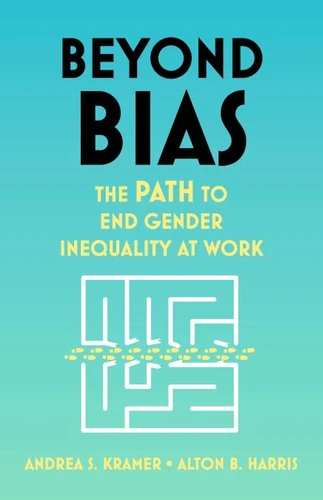Beyond Bias. How to Fix the System, Not the Symptoms, of Gender Inequality at Work
Par : ,Formats :
Disponible dans votre compte client Decitre ou Furet du Nord dès validation de votre commande. Le format ePub protégé est :
- Compatible avec une lecture sur My Vivlio (smartphone, tablette, ordinateur)
- Compatible avec une lecture sur liseuses Vivlio
- Pour les liseuses autres que Vivlio, vous devez utiliser le logiciel Adobe Digital Edition. Non compatible avec la lecture sur les liseuses Kindle, Remarkable et Sony
- Non compatible avec un achat hors France métropolitaine
 , qui est-ce ?
, qui est-ce ?Notre partenaire de plateforme de lecture numérique où vous retrouverez l'ensemble de vos ebooks gratuitement
Pour en savoir plus sur nos ebooks, consultez notre aide en ligne ici
- Nombre de pages256
- FormatePub
- ISBN978-1-3998-0150-8
- EAN9781399801508
- Date de parution28/09/2023
- Protection num.Adobe DRM
- Infos supplémentairesepub
- ÉditeurJohn Murray Business
Résumé
Despite extensive and costly diversity initiatives, little progress has been made in recent years in ending workplace gender inequality. Beyond Bias presents a compelling explanation of the reasons for this failure. Current diversity initiatives focus primarily on "teaching" people to be less biased and more inclusive. But this is the wrong focus. As Beyond Bias make clear, workplace gender inequality is a systemic problem caused largely by the (unintended) discriminatory operation of personnel systems, policies, and practices.
Beyond Bias presents the four-prong PATH program for directly attacking this structural discrimination-and with it, individuals' discriminatory conduct:· Prioritize Elimination of Exclusionary Behavior· Adopt Bias-free Methods of Decision-Making· Treat Inequality in the Home as a Workplace Problem· Halt Unequal Performance Evaluations and Leadership Development Opportunities In the authors' characteristically clear and engaging style, Beyond Bias lays out a comprehensive set of actions that organizations can take to ensure women no longer encounter gendered obstacles to their career advancement and find their workplaces engaging, supportive places where they-and everyone-can thrive.
Beyond Bias presents the four-prong PATH program for directly attacking this structural discrimination-and with it, individuals' discriminatory conduct:· Prioritize Elimination of Exclusionary Behavior· Adopt Bias-free Methods of Decision-Making· Treat Inequality in the Home as a Workplace Problem· Halt Unequal Performance Evaluations and Leadership Development Opportunities In the authors' characteristically clear and engaging style, Beyond Bias lays out a comprehensive set of actions that organizations can take to ensure women no longer encounter gendered obstacles to their career advancement and find their workplaces engaging, supportive places where they-and everyone-can thrive.
Despite extensive and costly diversity initiatives, little progress has been made in recent years in ending workplace gender inequality. Beyond Bias presents a compelling explanation of the reasons for this failure. Current diversity initiatives focus primarily on "teaching" people to be less biased and more inclusive. But this is the wrong focus. As Beyond Bias make clear, workplace gender inequality is a systemic problem caused largely by the (unintended) discriminatory operation of personnel systems, policies, and practices.
Beyond Bias presents the four-prong PATH program for directly attacking this structural discrimination-and with it, individuals' discriminatory conduct:· Prioritize Elimination of Exclusionary Behavior· Adopt Bias-free Methods of Decision-Making· Treat Inequality in the Home as a Workplace Problem· Halt Unequal Performance Evaluations and Leadership Development Opportunities In the authors' characteristically clear and engaging style, Beyond Bias lays out a comprehensive set of actions that organizations can take to ensure women no longer encounter gendered obstacles to their career advancement and find their workplaces engaging, supportive places where they-and everyone-can thrive.
Beyond Bias presents the four-prong PATH program for directly attacking this structural discrimination-and with it, individuals' discriminatory conduct:· Prioritize Elimination of Exclusionary Behavior· Adopt Bias-free Methods of Decision-Making· Treat Inequality in the Home as a Workplace Problem· Halt Unequal Performance Evaluations and Leadership Development Opportunities In the authors' characteristically clear and engaging style, Beyond Bias lays out a comprehensive set of actions that organizations can take to ensure women no longer encounter gendered obstacles to their career advancement and find their workplaces engaging, supportive places where they-and everyone-can thrive.





